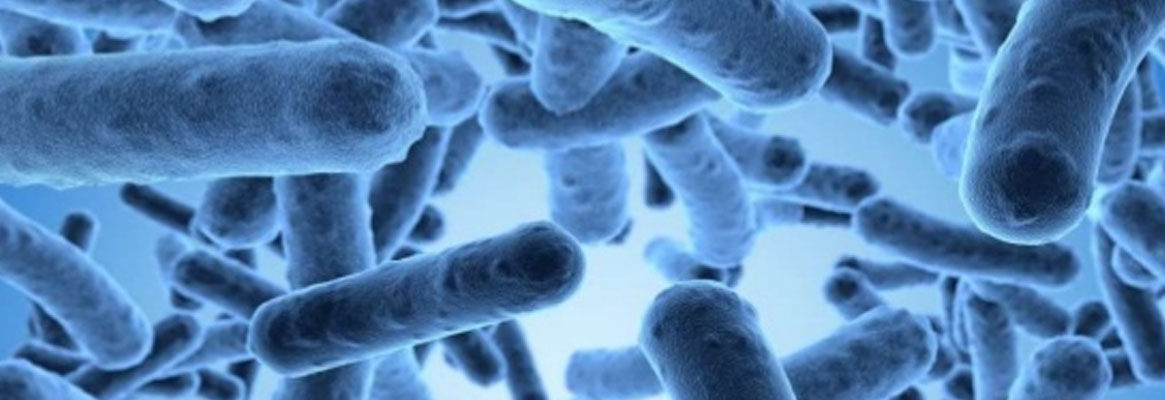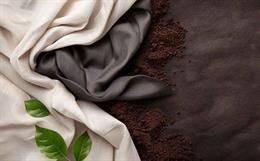ABSTRACT
Bio shield AM 500 3- (trimethoxy silyl)- propyl - dimethyloctadecyl ammonium chloride was applied to cottonfabrics by a cold pad-batch method in the presence of an alkaline catalyst toevaluate its use as a durable antimicrobial
INTRODUCTION
In the present day world most of us are very conscious aboutour hygiene and cleanliness. Clothing and textile materials are not only thecarriers of microorganisms such as pathogenic bacteria, odour generatingbacteria and mould fungi, but also good media for the growth of the microorganisms.
Microbial infestation poses danger to both living and nonliving matters. Obnoxious smell form the inner garments such as socks, spreadof diseases, staining and degradation of textiles are some of the detrimentaleffects of bad microbes. Though the use of antimicrobials have been known forthe decades, it is only in the recent couple of years several attempts havebeen made on finishing textiles with antimicrobial compounds. Anti microbialfinish is a recent innovation in finishes. The consumers are now increasinglyaware of the hygienic life style and there is a necessity and expectation for awide range of textile products finished with antimicrobial properties. Thisfinish prevents the growth of bacteria and products finished in it have beenproved environment friendly and health protecting, preventing diseases. It alsoprevents garments from unpleasant odour.
In this research, subjective evaluations of antimicrobialfinish applied fabrics are analyzed. The result of the antimicrobial activityis based on the standard test method AATCC 147 for evaluating antimicrobial effectiveness.
EXPERIMENTAL
Material used
Fabric
Cotton fabric with the following specification is scouredand bleached prior to the application of finish.
| Fabric Count : | 80 x 80 |
| Yarn Count : | 60s Combed X 60s Combed |
| GSM : | 180 |
| Type of weave : | Plain |
Bio shield AM 500 which is an aqueous solution of siliconquaternary ammonium salt, the key ingredient in it being 3 - (trimethoxy silyl)- propyl - dimethyl octadecyl ammonium chloride.
Pretreatment
The material is treated with 2g/l acetic acid at 70 0Cfor 15 minutes with water. The liquor ratio is 1:20. The material isgiven a cold wash for 5 minutes. The pH is maintained at 7.
Finish Application
The pretreated cotton fabric is treated with bio shield AM 500 at three different concentrations 1%, 2% and 3% respectively at room temperature for 30 minutes with water. The liquor ratio is 1:7. The material is hydro dried for 5 minutes. The pH is maintained at 6. Finally the fabric samples are tested for antimicrobial activity as per the standard test methods.
Standard assessment test for anti microbial finish
The subjective test is carried out based on the various standards set by the American Association for Testing Chemicals and Colorist AATCC 147. The following tests are carried out to find out the antimicrobial activity.
1. Gram staining
2. Turbidity test
Gram staining
Preparation of Nutrient broth solution:
Nutrient broth is a media which helps to grow bacteria with the necessary ingredients in a broth for the analysis of bacteria. A broth is prepared with the following ingredients.
|
Water - |
100ml |
|
Peptone - |
0.2 gm |
|
Yeast - |
0.2 gm |
|
Beef extract - |
0.3 gm |
|
NaCL - |
0.5 gm |
The solution is sterilized for 15 min at 1200C and it is allowed to cool. Then the fabric is immersed in the broth solution for 24 hours.
Gram staining
After 24 hours of growth from nutrient broth, the growth suspension is taken using an inoculation needle and it is placed on a glass slide. A smear is made and it is heat fixed. Then it is treated with solutions like crystal violet and kept for 1 min. Then it is rinsed with distilled water and 2 drops of iodine is added and kept for 60 sec. Then it is decolorized with few drops of alcohol because large amount of alcohol makes even a gram positive cell to gram negative. After adding alcohol, it is again washed with water and saffranin is added and it is kept for 1 min.
It is again washed with distilled water, air dried and observed under microscope. Bacteria stained by the gram method fall under two groups. Gram positive bacteria which retain violet colour and the Gram negative bacteria stained by sarafnin and hence appear pink in colour.
Turbidity test
Turbidity test is the subjective evaluation test carried out to find the bacterial growth in the microscope .The result is predicted based on the turbidity of the solution which is determined by the amount of passage of light. The turbidity decreases, as the bacterial growth reduces with the increase in the concentration of the antimicrobial agent. Hence, the turbidity rate decreases as the bacterial growth reduces.
TABLE 1
Turbidity test
|
Concentration (%) |
Turbidity rate |
||||
|
Sample1 |
Sample2 |
Sample3 |
Sample4 |
Sample5 |
|
|
Untreated sample |
283 |
285 |
280 |
282 |
279 |
|
1 % treated |
256 |
254 |
253 |
257 |
255 |
|
2 % treated |
232 |
235 |
230 |
236 |
234 |
|
3 % treated |
189 |
191 |
187 |
192 |
188 |
|
After 10 washes |
187 |
186 |
187 |
190 |
188 |
|
After 15 washes |
186 |
187 |
190 |
188 |
187 |
|
Sweat sample(un treated) |
456 |
478 |
443 |
467 |
458 |
|
Sweat sample (treated) |
192 |
188 |
190 |
186 |
189 |
RESULTS AND DISCUSSION
From the turbidity test results the bacterial reduction rate varies from
|
1 percent concentration |
- 283 turbidity rate |
|
2 percent concentration |
- 267 turbidity rate |
|
3 percent concentration |
- 183 turbidity rate |
There is a decrease in turbidity rate as the concentration increases.The findings of the study reveals that the 3 % concentration of anti microbial treated fabrics found to be very effective and can be used for hygenic and health care application. The bacteria found in the fabric are gram positive (turbidity value 183 indicates, there are 183 microbes) which will not cause any problem to human beings. Further research work has to be carried out in finding out the genus and species of the organism.
CONCLUSION
Apart from the industrial use, anti microbial finish on textiles has become essential in our day today life to live in fresh and hygienic atmosphere. The finish has excellent potential in various textile uses like inner wears, house hold articles and baby care products. Even though many products have come, but still there is very good scope for the textile researchers in this field.
References
www.aatcc.org
Asian textile journal March 2004 P-.45, 47
Barxoclamo (July 2004) Indian textile journal
Butter Worth, (1964), Review Of Textile Process, Butter Worth And Co. Publishers Ltd, Bangalore, P-33
To read more articles on Textile, Industry, Technical Textile, Dyes & Chemicals, Machinery, Fashion, Apparel, Technology, Retail, Leather, Footwear & Jewellery, Software and General please visit http://articles.fibre2fashion.com
To promote your company, product and services via promotional article, follow
this link: http://www.fibre2fashion.com/services/article-writing-service/content-promotion-services.asp



_Small.jpg)



